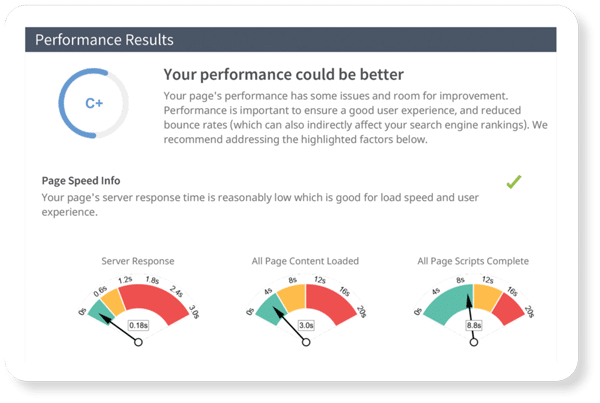Chances are, you’ve heard about pay-per-click marketing, more commonly referred to as PPC. Even if you are well-versed in marketing strategies, this one is daunting for even the most seasoned professional. There’s a reason managing PPC campaigns is its own career track – doing PPC incorrectly has the potential to waste an incredible amount of money and frustrate you in the process. So who should be pursuing PPC for their business, and how do you make sure you do it correctly and avoid wasted marketing dollars? Read on for everything you need to know.
What is paid search?
Simply put, it’s called “paid” search because the advertiser pays a fee every time their ad is clicked. The ads we’re referring to here are the ones you’re used to seeing at the top of the search engine results pages, typically designated with a “paid” label. The most common platform for paid search is Google Ads, but Bing Ads and social media platforms also have paid search ads.
How does paid search work?
Paid search works as an auction-based system where advertisers bid on specific keywords. When someone searches for those keywords or phrases on a search engine, the search engine runs an auction to determine which ads will be displayed in the search results. The auction considers several factors, including the bid amount (how much an advertiser is willing to pay for a click), ad relevance, and the quality of the landing page. The ads that win the auction are displayed prominently on the search results page.
How can you succeed at paid search as a beginner?
So, what’s the best way to dip your toe into paid search? Start with these steps.
- Conduct keyword research. Begin by conducting thorough keyword research to identify the most relevant and high-performing keywords for your business. Use keyword research tools and consider the search volume, competition, and relevance of each keyword. By understanding what your audience is searching for as well as what your competitors are paying top dollar to bid on, you’ll begin to understand what makes the most sense for your business PPC strategy.
- Create your ads. That includes compelling ad copy that includes relevant keywords and a strong call to action, as well as landing pages with high quality and relevancy scores, as this impacts the likelihood that you’ll show up in a search results page. Crafting compelling ad copy that highlights the unique value proposition of your product or service without being deceptive or overly aggressive is the key.
- Dial in your targeting. Refine your targeting options to reach the right audience by choosing the best geographic locations, language preferences, and demographics that align with your target market. Consider using audience targeting and remarketing options to reach specific groups of people that make the most sense.
- Manage your budget carefully. Set a daily or monthly budget that aligns with your marketing goals. Don’t set it and forget it, though. PPC isn’t that kind of marketing strategy. Monitor your spending regularly and adjust your bids and budgets based on the performance of your ads.
- Test and refine your ads as necessary. Run multiple versions of your ads to see which ones perform the best. Test different headlines, ad copy, and calls to action to optimize your campaigns. Continuously monitor and refine your ads based on which version is performing the best.
How do you know if your PPC campaigns are performing well?
There are metrics to pay attention to when evaluating your PPC performance. Here are the most important ones to watch.
Click-Through Rate (CTR): The percentage of people who click on your ads. A higher CTR indicates that your ads are relevant and appealing to your target audience.
Conversion Rate: The percentage of visitors who complete a desired action on your landing pages. The exact action is different depending on the campaign – it could be making a purchase or an appointment. Define what a conversion is for your campaign before you start. After all, you aren’t doing this just to show people your pretty landing page, right? This metric indicates the effectiveness of your landing page and ad messaging.
Return on Investment (ROI): The revenue generated compared to the amount spent on advertising. This metric helps determine if your PPC campaigns are profitable. If you’re spending more than you’re making, it’s probably not working.
Cost per Acquisition (CPA): The cost incurred for acquiring a new customer or lead, calculated by dividing the total cost of your PPC campaign by the number of conversions.
Quality Score: A metric used by search engines to determine the relevance and quality of your ads. A higher quality score can result in better ad positions and lower bid costs.
We Can Help
Prefer not to go it alone? MyAdvice has been helping practices like yours with paid search and more for more than 20 years. Contact one of our digital marketing experts today for a complimentary consultation.


